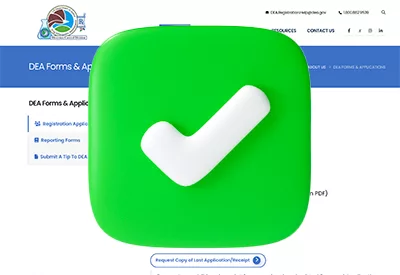How Long Should We Continue Esketamine?
In 2019, the FDA approved intranasal esketamine (Spravato) in treatment-resistant depression (TRD), followed soon after by an indication in depression with suicidality. The move ignited a wave of excitement for this glutamatergic dissociative anesthetic, first synthesized as racemic ketamine half a century ago. With its efficacy in TRD and rapid action, esketamine filled several unmet needs. But as its use has grown, so have questions about how long to continue the treatment.
A typical course of treatment
The standard protocol for esketamine involves administering it twice weekly for four weeks, followed by four weekly treatments. Doses must be given in a supervised (office or inpatient) setting, and providers must be enrolled in a Risk Evaluation and Mitigation Strategy (REMS) program. These regulations are designed to prevent abuse or diversion of the Schedule III drug, as well as to monitor for blood pressure elevation, sedation, and dissociation after the dose. Other common side effects include dizziness and nausea.
Some patients remain well after that two-month course, but many relapse, and the best approach to prevention remains unclear. Cognitive behavioral therapy has some support, but attempts to sustain the benefits with other medications have failed, including lithium as well as medications that share in esketamine’s glutamatergic mechanism like lamotrigine, riluzole, and d-cycloserine (McMullen EP et al, Adv Ther 2021;38(6):2795–2820). Only repeated treatments with ketamine/esketamine reliably sustains response.
Recent esketamine trials have tested continuation of this drug at a reduced frequency, much as we do with maintenance ECT. In the acute esketamine trials, this approach did not look promising. Esketamine worked quickly but tended to fizzle out. Several industry-sponsored trials were no longer positive at the 28-day mark in an analysis of eight disparate studies (Hock RS et al, J Clin Psychiatry 2022;84(1):21r14086). Importantly, for the subgroup of studies that examined patients with TRD, esketamine remained superior to placebo at 28 days. Longer-term maintenance trials paint a more positive picture, but these trials have problems.
Maintenance trials
Three trials tested long-term maintenance with esketamine: SUSTAIN-1, SUSTAIN-2, and SUSTAIN-3. In SUSTAIN-1, esketamine was either continued or substituted with a placebo in 297 patients who achieved either stable response (n=121) or remission (n=176) in a four-month course of esketamine treatment (Daly EJ, JAMA Psychiatry 2019;76:893–903). All patients had tried (and failed) an antidepressant before starting esketamine, and all started a new antidepressant during the trial. The duration of maintenance therapy was variable (average of four months). Relapse rates were much lower with maintenance esketamine compared to placebo (25.8% vs 58.6%, number needed to treat [NNT]=4 for stable responders; 26.7% vs 45.3%, NNT=6 for remitters).
The SUSTAIN-2 and SUSTAIN-3 trials employed a less rigorous design, testing esketamine continuation open-label and without a control group. Together, they followed 1,950 patients for one to three years on maintenance esketamine, dosed every one to two weeks (most patients were dosed at the two-week interval). These patients tended to stay well, with increasing remission rates over time and minimal loss of response. These trials did not uncover any new safety concerns or tolerance to esketamine’s benefits. There were no significant trends in treatment-emergent psychosis, cognitive impairment, substance use disorders, or suicidal ideation. On average, patients tended to stay well on esketamine (Wajs E et al, J Clin Psychiatry 2020;81(3):19m12891; Zaki N et al, Neuropsychopharmacology 2023;48(8):1225–1233).
Risks
Although no long-term problems showed up in the SUSTAIN trials, potential adverse effects include bladder dysfunction, neurocognitive impairment, and drug misuse. Those problems are well documented in studies of ketamine abuse and the basic science literature. Notably, the therapeutic doses used in the SUSTAIN trials were much lower than recreational levels, and the patient population was also more selective. Patients with personality disorders, recent prominent suicidal intention, psychotic symptoms, substance use disorders, or significant cardiovascular disease were excluded.
In clinical practice, assess for bladder dysfunction by asking about dysuria and hematuria. Detecting cognitive impairment demands more effort, such as periodic monitoring with standardized tools. To monitor misuse, ask about use of online ketamine services during the screening process, and consider random drug screens and use of state prescription drug monitoring programs during maintenance therapy.
Esketamine is often used for patients who have not responded to other options, and in our experience these patients often need continued treatment to stay well. Psychotherapy offers hope and may be effective for prevention even if it did not work acutely in depression. In the clinic where I practice, we administer the medication in a group format and provide a guided meditation and discussion about the experience.
During maintenance, attempt to increase the intervals between treatments, carefully monitoring longitudinal depression outcomes with standard instruments (eg, Montgomery-Åsberg Depression Rating Scale, Patient Health Questionnaire, Quick Inventory of Depressive Symptomatology) as well as measures of functional improvement (eg, Work and Social Adjustment Scale). Avoid going beyond the FDA-approved maximum dose of 84 mg. Carefully assess whether the patient had a true response to esketamine. Some patients wish to continue esketamine despite experiencing only momentary relief of symptoms without any meaningful improvement. Consider other options for TRD, such as switching to a monoamine oxidase inhibitor, transcranial magnetic stimulation, or augmenting with lithium or a second-generation antipsychotic.
The SUSTAIN-3 trial provides evidence that patients will benefit from reinitiation of esketamine if relapse occurs (Castro M et al, CNS Drugs 2023;37:715–723). For a quick visual of esketamine facts, see the table “Intranasal Esketamine (Spravato).”
Carlat Verdict
Ketamine and esketamine VERDICT have succeeded as fast-acting therapies for TRD and suicidality. However, we don’t have a reliable way to sustain their benefits other than continued dosing. The studies that support continued dosing do not fully rule out the possibility of tolerance and withdrawal.



_-The-Breakthrough-Antipsychotic-That-Could-Change-Everything.webp?t=1729528747)



